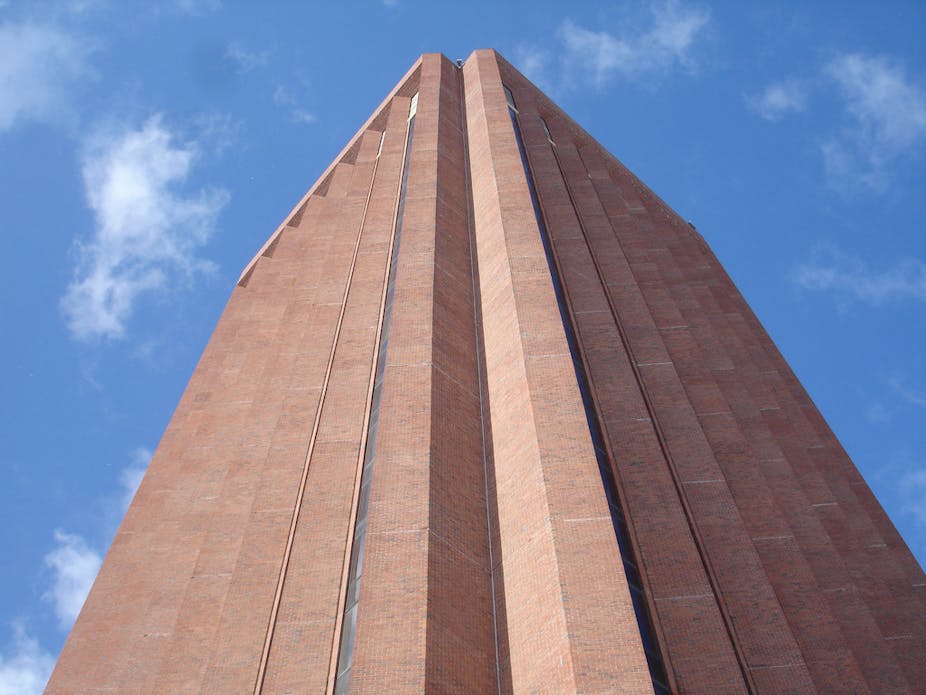A recent report by the Boston-based Pioneer Institute pointed out how out-of-state enrollments at the University of Massachusetts are limiting opportunities for in-state students.
For the right-leaning Pioneer Institute, UMass is an example of the public sector run amok. But Pioneer is not alone. There are others who have voiced similar concerns. For example, a state audit came out with a scathing criticism of University of California for discriminating against local students. And recent federal data show 43 of the 50 state flagship schools enrolled fewer local students in 2014 than they did a decade earlier.
My experience as a higher education researcher suggests it is important to understand why colleges and universities are enrolling students from out of state. The point being that years of underfunding and the growth of market-based practices such as competition for tuition revenue have created incentives for colleges and universities to enroll nonresidents. The consequence of this has been added financial strain on lower-income students.
When public universities devote fewer resources to lower-income or minority students, that shows an erosion of the very mission for which the state colleges and universities, were founded.
Wooing nonresident students
Data complied by the College Board show the share of out-of-state students at public colleges and universities grew in 38 states between 2002 and 2012.
And it is not just prominent flagship schools that attracted out-of-state students. A study from the New America Foundation, a public policy think tank, found that even regional colleges are wooing nonresident students.

Clearly, out-of-state students can provide many educational gains: college students benefit when they interact with each other through a process economists call “peer effects,” which include the learning and social development students get from each other. Educational research shows all students gain from a diverse student body. By engaging with peers with different experience and viewpoints, students learn more both in and out of the classroom.
But it may not be the benefits of a diverse student body that are driving public schools to enroll nonresidents.
Going after the money
Nonresident students pay higher tuition at public colleges and universities. In 2013, average in-state tuition at public four-year colleges was US$7,526, but a whopping $17,047 for nonresidents.
Public institutions have been experiencing declining state funding for decades For example, state funds accounted for 52.8 percent of operating expenditures at the University of Illinois at Chicago in 1987, but only 16.9 percent by 2012.
It comes as no surprise then that these institutions would look to nonresident students for additional revenue.

A recent study found a strong relationship between state funding and nonresident students enrollment. When states increase funding, public institutions enroll fewer nonresidents.
“Enticing” students
Public colleges and universities were established by the states to educate residents and to improve the lives of people through research and service. However, in recent years, these institutions have become increasingly focused on improving their own bottom line and competing in the marketplace. Recruiting nonresident students who pay high tuition is one way in which public schools compete in markets.
The market for nonresident students can be understood as a form of interstate and international commerce.
Colleges compete to attract wealthy nonresident students by providing “country club” campuses, investing in luxury dorms and other amenities that attract wealthy students.
Who pays the price?
Policymakers in the U.S. have long favored markets in higher education, the idea being that when institutions compete they will offer better-quality and lower-priced education.
The question of quality is difficult to assess, but here is the impact this market-based approach had on price.
Changes to the way higher education was funded in the 1980s and 1990s encouraged colleges to compete for revenue. Aid came to be allocated to students rather than schools and more in the form of loans. Along with this came shrinking of direct funding from the states while increasing funds available through competition.
Over time, competition for revenue helped to drive the price of tuition up. Adjusting for inflation, the average net price for instate tuition at public four-year colleges increased by 170 percent between 1990 to 2015.
Predictably, students and institutions with the fewest resources are left to face the greatest challenges of such a steep hike. In 2008, it took 90 percent of family earnings to cover tuition at a public four-year college for students in the bottom fifth of the income distribution.

In this process, institutions that enroll a high proportion of local lower-income students rather than competing for lucrative nonresidents have become most vulnerable.
For example, underfunding has resulted in overcrowded classrooms and crumbling facilities at the City University of New York, where over half of the students come from families with incomes below US$30,000. And this is not the only such example.
A budget impasse in Illinois brought Chicago State University, with a student population that is 69 percent low-income, to the brink of closure.
What is to be done?
The California-based Campaign for College Opportunity, a nonprofit that works to expand college access, suggests capping nonresident enrollment at public colleges and universities. And the plan is gaining traction. Hillary Clinton recently endorsed caps on nonresidents at the University of California.
Setting limitations on nonresident students might seem to be common sense. However, institutional autonomy has been a strength of higher education in the U.S.
Further, my evaluation of the evidence suggests that it is funding cuts and market competition rather than nonresident enrollments per se that have drawn higher education away from its public mission.
Perhaps little can be done in the near term. But over a longer period public reinvestment combined with renewal of the public mission among state intuitions seems a more sustainable path than an arbitrary cap on nonresident enrollments.

